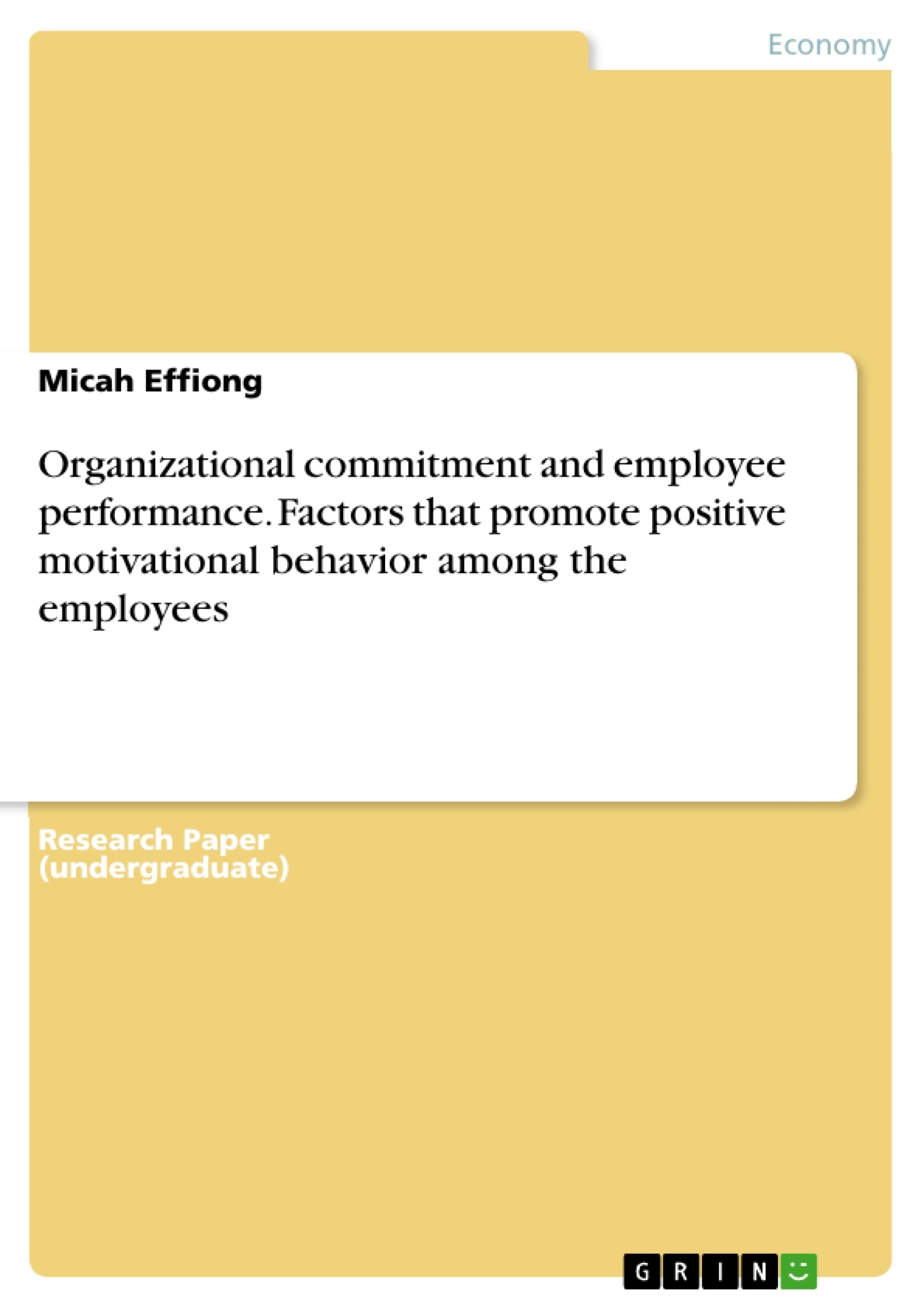The purpose of this study is to examine the relationship between organizational commitment, moral or affective commitment, calculative or continuance commitment and normative commitment and job performance. The population of the study is made up of 300 academic and non-academic staff of Ritman University, Ikot Ekpene, Akwa Ibom State. The paper used purposive sampling for the selection of the respondents. Questionnaires were distributed to the respondents for statistical analysis. The study utilized linear correlation coefficient to analyze the data collected.
The study revealed a number of findings including: there is a significant correlation between organizational commitment and employee performance, there is a significant correlation between moral or affective commitment and job performance, there is statistically significant correlation between continuance commitment and job performance. Based on the findings, some recommendations were made most importantly: Nigeria University should lay more emphases on the provision of social responsibility to its workers, owners, society and other stakeholders. Finally, the success or failure of any organization depends on its workforce. Adequate motivation and remuneration boost the employee moral to work harder towards achieving or accomplishing challenging task or goals.
Inhaltsverzeichnis (Table of Contents)
- CHAPTER ONE: INTRODUCTION
- 1.1 Background to the Study
- 1.2 Statement of the Problem
- 1.3 Research Question
- 1.4 Objective of the Study
- 1.5 Hypotheses of the Study
- 1.6 Significant of the Study
- 1.7 Scope of the Study
- 1.8 Limitation of the Study
- 1.9 Definitions of Term
- CHAPTER TWO: REVIEW OF RELATED LITERATURE
- 2.0 Introduction
- 2.1 Conceptual framework
- 2.1.1 Emotional/affective commitment
- 2.1.2 Continuance commitment
- 2.1.3 Normative commitment
- 2.1.4 Strategies Used For Motivation as Organizational Commitment
- 2.1.5 Salary, Wages and Conditions of Service
- 2.1.6 Staff Training
- 2.1.7 Communication
- 2.2 Review of Relevant Study
- 2.2.1 Organizational Commitment
- 2.2.2 Levels of Commitment - Forms of Commitment
- 2.2.3 Antecedent to commitment in work place
- 2.2.4 Consequences of workplace commitment
- 2.3 Theoretical Framework
- 2.3.1. The Early Era
- 2.3.2 Middle Era
- 2.3.3 The Third Era the Multi-dimensional Approach
- 2.3.4 Model Based on two Dimensions
- 2.3.5 Era of multiple competitions
- CHAPTER THREE: RESEARCH METHODOLOGY
- 3.0 Introduction
- 3.1 Research design
- 3.2 Population of study
- 3.3 Sample and sample technique
- 3.4 Source of data
- 3.5 Scoring Instrument
- 3.6 Method of Collecting Data
- 3.7 Method of Data Analysis
- 3.8 Decision Criteria
- CHAPTER FOUR: DATA PRESENTATION, ANALYSIS AND INTERPRETATION
- 4.0 Introduction
- 4.1 Data presentation
- 4.1.1 Number of questionnaire administered and returns to the researcher
- 4.1.2 Presentation of data by sex
- 4.2 Data Analysis/Interpretation
- 4.3 Test of hypotheses
Zielsetzung und Themenschwerpunkte (Objectives and Key Themes)
This study investigates the relationship between organizational commitment and job performance. It examines how various forms of commitment, including emotional, continuance, and normative commitment, influence employee productivity. The research aims to explore the factors that promote positive motivational behaviors and contribute to the success of an organization.
- The impact of different types of commitment (emotional, continuance, normative) on job performance
- Motivational strategies to foster organizational commitment and success
- The relationship between commitment and employee behavior
- The concept of organizational commitment and its influence on employee performance
- The role of obligation and responsibility in shaping job performance
Zusammenfassung der Kapitel (Chapter Summaries)
Chapter 1 provides a background to the study, outlining the importance of organizational commitment and its influence on employee performance. It identifies the problem, research questions, objectives, and hypotheses. Chapter 2 reviews relevant literature on organizational commitment, exploring its conceptual framework, forms, antecedents, and consequences. It also examines various theoretical frameworks used to understand commitment, such as the Side-Bet Approach, the Psychological Attachment Approach, and the Multi-dimensional Approach. Chapter 3 delves into the research methodology, outlining the design, population, sample selection, data collection methods, data analysis techniques, and decision criteria used in the study.
Schlüsselwörter (Keywords)
Organizational commitment, employee performance, emotional commitment, continuance commitment, normative commitment, motivation, employee behavior, job satisfaction, employee retention, productivity, job performance, organizational citizenship behavior.
- Quote paper
- Micah Effiong (Author), 2017, Organizational commitment and employee performance. Factors that promote positive motivational behavior among the employees, Munich, GRIN Verlag, https://www.grin.com/document/518385



